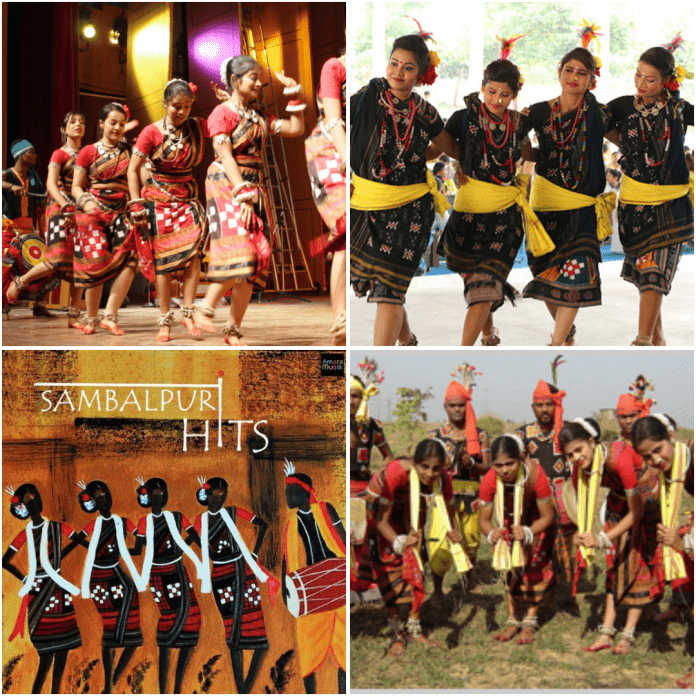In India, women have always been treated as inferior than their male counter parts. They have been socially, economically and politically marginalised since long time. Their subordination is so pathetic is that they are even not free from cultural narratives. Media has always represented them as commodities or objects. They are being used as sexual objects to satisfy male’s desire in various magazines, songs, dances and dramas. Here the author has made an attempt to examine Sambalpuri song through women’s eyes.
Song is not only a medium of entertainment but also a cultural symbol. It conveys messages about the way of life of people of a particular area. Since long time song has been a pain reliever and a medium of transferring cultural values and norms from one generation to another. But these days most of the songs are made only for entertainment and for commercial purposes. Song has become a dominant source of gender construction. Westernization, modernization and globalization have adversely impacted on India’s music industry. To fetch the large audience and to maximize profit, producers, directors and lyricists are making songs and dances with western touch.

Use of dirty body movements and filthy languages in songs and dances has become a common trend. Most of the Bollywood movies become blockbusters only for their item songs. Now this trend is adopted by many Indian states while making songs and dances in regional languages. Sambalpuri is one of the well-known language mainly spoken in western parts of Odisha is also not free from the trend. The song has its own uniqueness because of its musical instruments. It has gained global fame for the song “Rangabati”. The song is so significant that the people of this region have renamed a village after the lyricists of Rangabati from Bilunga (original) to Raanagabati Bilunga. There is no marriage processions, cultural functions and idol immersion where the song has not been played. In 1979-1980 it became the first song of India broadcasted in British Broadcasting Corporation (BBC) London and Voice of America (VOA).Rangabati has also been played in International cricket matches and during Republic day celebration at Lal Quilla, New Delhi in 2007.
Apart from Rangabati, Dalkhai, Rasarkeli, Maelajada are the other popular folk songs in Sambalpuri have touched many hearts of Indian song lovers. Earlier these song were emotionally attached with the people of Western Odisha. Lyricists, producers and directors were making the songs to enrich the culture of this region. But these days some of the Sambalpuri songs cannot be listened with family members and relatives. With the influence of westernization and modernization the song has lost its earlier glory.

These days Sambalpuri song industry is under the control of male dominance. Most of the songs are written and directed by males. Women are represented as malmali (naughty) , rasali (sexy) dhokabali or bewafa (traitor) and Gunhegar (guilty) in many Sambalpuri songs. Even in many Odia films Sambalpuri song is used to make item songs where a girl dance with short dresses and with filthy body movements to fulfill the sexual urges of male folk. This has a negative impact on society. Because of these songs eve teasing and violence related to women are increasing day by day. According to sociologist Howard Soul Becker’s labelling theory self-identity and the behaviors of individuals may be determined and influenced by the term used to describe or classify them.
If women are repeatedly called as traitors, sexy, quarrelsome, non-rational in dominant cultural narratives they will be treated as same by the society. It will also create gender stereotype. Government is making various plans and policies to empower women and to bring gender equality, huge amount of money is being spent for gender sensitisation. But gender issues related to representation of women in different cultural narratives has given least important. These days making a song or dance video and releasing them in YouTube and other social media is not a difficult task.
Thousands of videos and songs are being uploaded daily by individuals and production companies. And the irony is that no census board is there to certify the contains. Individual YouTubers, producers, directors and singers are making songs and dances ignoring societal norms and values. Some of them even do not disclose their original identities. Hence steps should be taken to ban this type of songs.A committee at regional level can be formed to check the vulgarity and to give approval before it is released. It should be a duty of the producers and singers not to make any songs which degrade the status of women.
(The views expressed are the writer’s own)

Prakash Bhue is pursuing his Ph.D in Sociology at Sambalpur University, Odisha. He is a Research Fellow under Odisha University Research and Innovation Incentivisation Plan (OURIIP). His articles have been published in various national and international journals. You can reach him at: [email protected]

